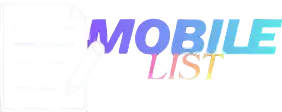In the fast-paced world of business, effective communication is the backbone of success. One tool that can help ensure your messages are not only delivered but also acknowledged is Outlook’s read receipt feature. This article will delve into the intricacies of using read receipts, their benefits, and best practices for incorporating them into your professional communication strategies.
Understanding Read Receipts in Outlook
Read receipts are a feature in Microsoft Outlook that provide confirmation when a recipient has opened and read your email message. When you enable the read receipt option, Outlook will send a notification to you, the sender, once the recipient has viewed the message.
To activate the read receipt option in Outlook, simply follow these steps:
- Compose a new email or open an existing message.
- Click on the “Options” tab in the email ribbon.
- In the “Tracking” section, select the “Request a Read Receipt” option.
- Send the email as usual.
It’s important to note that the recipient has the choice to accept or decline the read receipt request. If they choose to decline, you will not receive the confirmation that the message has been read.
Benefits of Using Read Receipts
Implementing read receipts in your Outlook communication can offer several advantages:
- Improved Accountability: By requesting a read receipt, you can ensure that your important messages have been received and acknowledged by the intended recipient. This can be particularly useful for time-sensitive information, action items, or updates that require a prompt response.
- Enhanced Productivity: Knowing that your message has been read can help you avoid unnecessary follow-ups or chasing down responses. This can streamline your workflow and allow you to focus on other pressing tasks.
- Informed Decision-Making: The read receipt information can provide valuable insights into your communication patterns. By analyzing which messages are being read and when, you can optimize your email strategies, adjust your tone and content, and ensure your messages are resonating with your audience.
- Professional Courtesy: Requesting a read receipt Shareholder Database can be a considerate gesture, demonstrating that you value the recipient’s time and attention. This small action can contribute to building stronger professional relationships and a more collaborative work environment.
Best Practices for Leveraging Read Receipts
To ensure the effective use of read receipts in Outlook, consider the following best practices:
- Selective Application: Use read receipts judiciously and only for messages that truly require confirmation of receipt. Overusing this feature can come across as demanding or intrusive, potentially damaging professional relationships.
- Clear Communication: When requesting a read receipt, provide a brief explanation in the email body to set the appropriate context and manage the recipient’s expectations. For example, “Please confirm receipt of this important update.”
- Respect Privacy: Understand that some Within this context The responsive website recipients may choose to decline read receipt requests for personal or professional reasons. Respect their decision and avoid pressuring them to comply.
- Analyze Patterns: Review the read receipt data periodically to identify trends and opportunities for improving your communication strategies. This can help you better understand your audience’s preferences and optimize your email communication accordingly.
By mastering the use of read receipts in Outlook
You can elevate your professional communication, foster stronger relationships, and streamline your workflow. Embrace this feature as a valuable tool in your communication toolkit and watch as it contributes to your overall business success.

